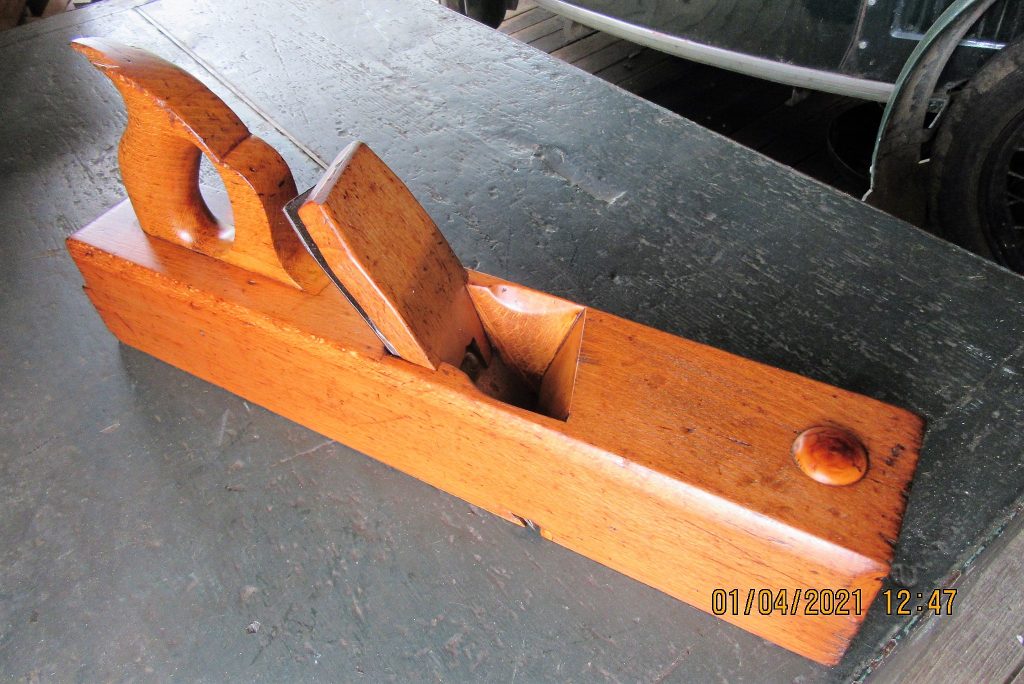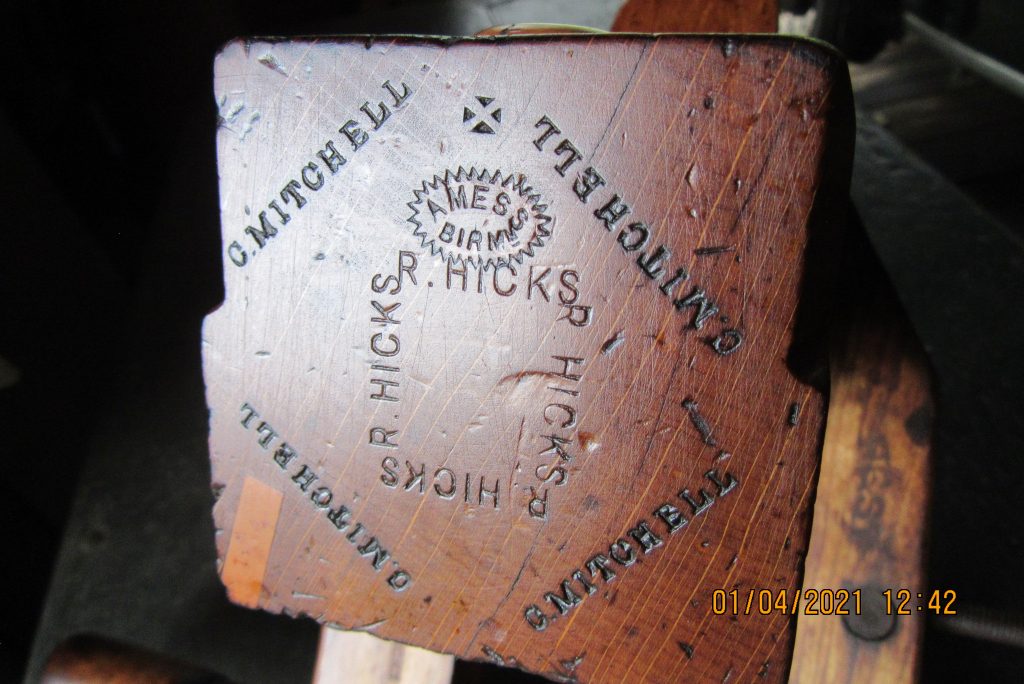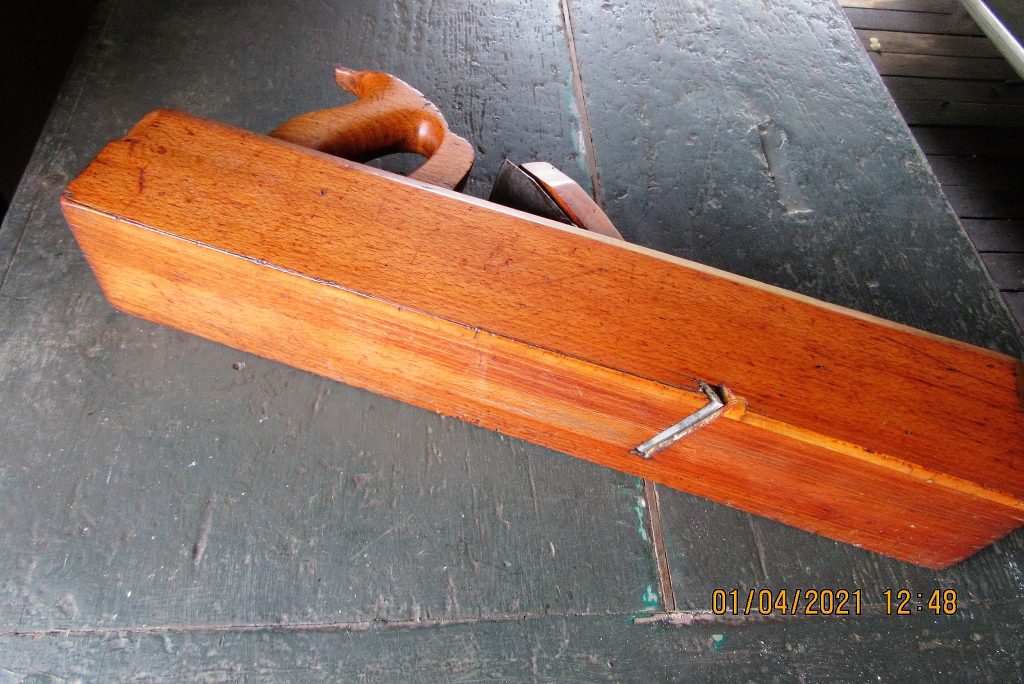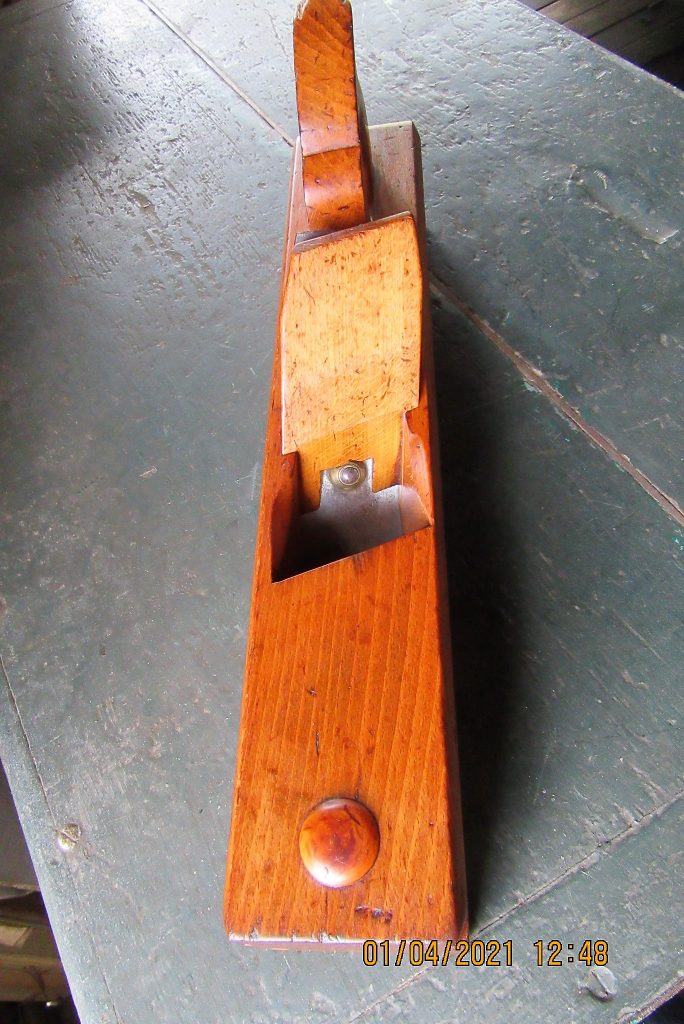Frame and panel construction is a universal feature in 18th century domestic joinery. Until 1750 most principal rooms in the UK were fully panelled. After this date panel construction continued in doors and window shutters, and indeed almost every piece of joinery. While much panelling was “square” (square edge to rails – flat panelling) in better quality work the framing would be finished with a moulding and the panel would be fielded or raised. Doors within houses followed the general rule: those on the secondary floors were square and flat while those in the principal floors were moulded and fielded.

Panel planes were used to work the wide flat rebate around the central raised panel. In the early 19th century panel planes were superseded by badger planes which accomplished the same work and were used for heavy rebating in addition.
This Badger Plane was in W. A. Richards tool chest but unlike virtually every other tool does not bear his name stamp. It was stamped by C. Mitchell and he did so no less than thirteen times on the heel, toe, inside the mouth and on the wedge! My father stamped his name on acquiring the tool chest and the plane.

The plane was made by John Amess of Birmingham as attested by his maker’s stamp. This enables me to date the tool with some accuracy as Amess is recorded as being in business in 1886, 1888 and 1889. (Goodman’s British Planemakers, 4th Ed). This corresponds with W. A. Richards’ lifetime as he was born in 1863, worked under his father and later became proprietor of the building and joinery business.
At first glance badger planes look like ordinary bench planes. On closer inspection it will be seen that the iron is both skewed and angled so that the cutting edge is exposed at the corner of the stock.

To combat wear the plane is “boxed”. In this case a plain strip of boxwood is inserted at a slight angle and forms the corner of the sole. The boxing has been repaired neatly just in front of the protruding corner of the iron. The round knob at the toe of the plane is a strike button made of box wood. A tap with a mallet on the button will decrease the depth of the cut and a sharper tap will release the wedge enabling the iron to be withdrawn. It measures 17 inches in length which was fairly standard for badger planes and has sufficient heft to be used rebating large softwood timbers.
The plane has seen years of use as evidenced by the shortening of the iron. There is still sufficient steel left at the cutting edge but the top of the iron is only just protruding above the wedge sufficiently to enable adjustment (deepening the cut) by tapping. The plane has a double iron (iron and chip breaker) as was usual by this date. The plane was almost black with ingrained dirt and old boiled linseed dressing but has cleaned up reasonably well. It still has its battle scars from long use. Badger planes will be found in many British wood working tool kits but apparently never made it across the Atlantic to the US. I do not know whether they are to be found in Australia.

